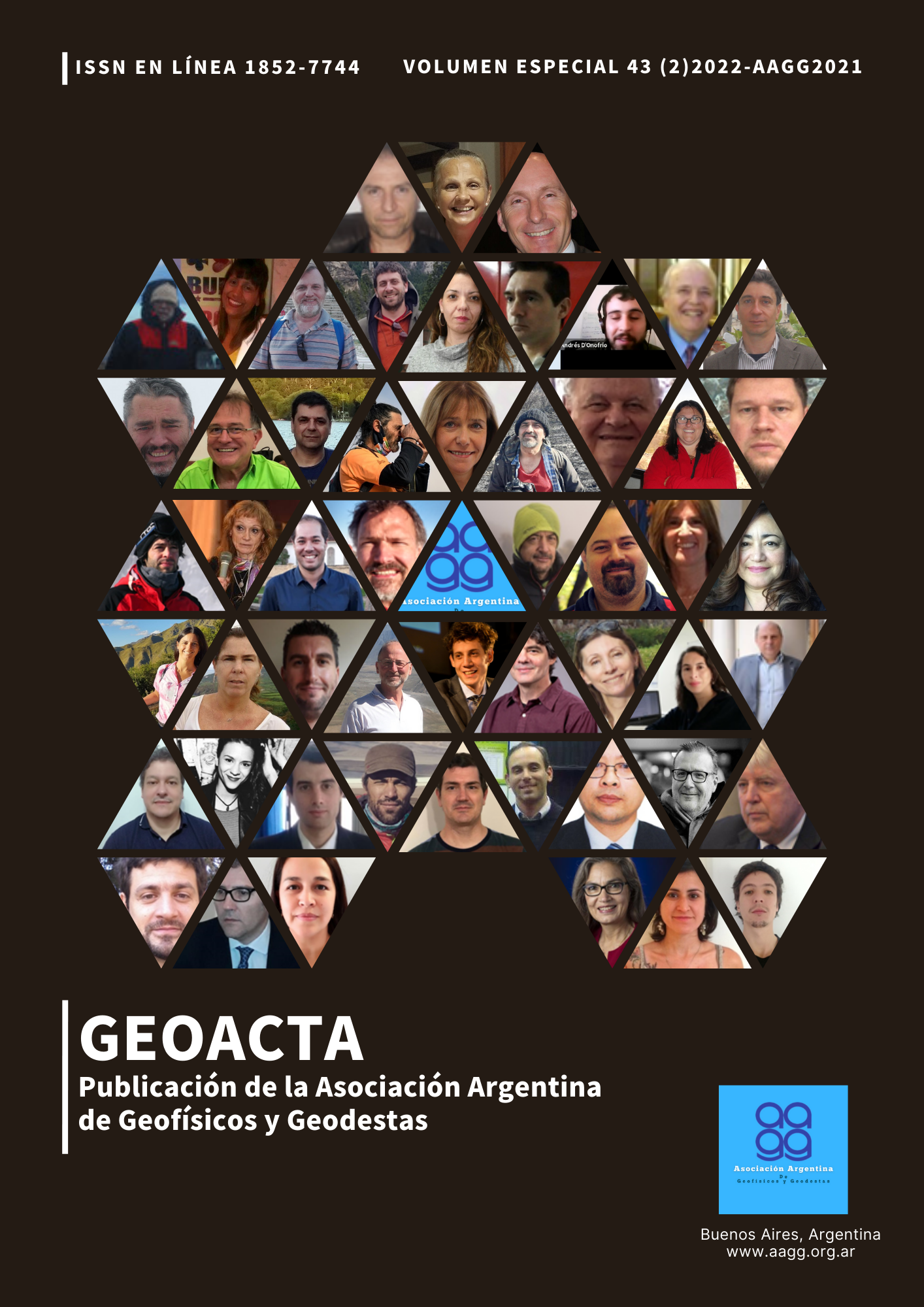A path of growth for Argentine Geodesy
Abstract
A National Geodesy Program is proposed which, with a smaller investment than the one the country makes in large instruments, will contribute to maximizing the benefit that Argentina extracts from them. The premise is that the Argentine instruments strengthen the global geodetic infrastructure in one of the world's most needy regions and are intensively exploited by the international community, but their use in the country is still limited due to the lack of inter-institutional coordination and the lack of Have enough specialized HR.
In recent years, state-of-the-art instruments have been installed that have made the country the best equipped in the region: three multi-technical observatories dedicated 100% to Geodesy, the German Argentine Geodesy Observatory (AGGO), the Observatory. Astronomical. Félix Aguilar (OAFA) and the Rio Grande Astronomical Station (EARG) and very sophisticated instruments partially dedicated to this discipline, the Chinese Argentine Radio Telescope (CART), the ESA Deep Space 3 station (ESA–DS3) and (CALTC). The facilities work in partnership with foreign institutions that provide the instruments, but the Argentine investment accumulated over time is as great or greater than the foreign one.
This has transformed Argentina into an example of compliance with the 2015 UN resolution, entitled "A Global Geodetic Reference Framework for Sustainable Development". It aims to face a variety of global problems whose approach requires the use of very sophisticated artificial satellites (change in sea level, terrestrial water cycle, geological risks, extreme weather events and climate change, ecosystem dynamics). The operation of these satellites requires improvements in the Global Geodetic Reference Frame that cannot be achieved by adding instruments in the most developed countries. On the contrary, it is necessary to add them in those that lack them, especially in the southern hemisphere.
The UN requirement falls on Geodesy and facing it implies the maintenance of international scientific services and the carrying out of very long-term works. This reduces the possibility of frequently publishing in high-impact journals and makes the conventional bibliometric indicators of the scientists who approach them grow relatively slowly. But this does not mean that such work lacks scientific hierarchy or that those who carry it out have little creativity. They are long-term works that arouse the interest of certain scientists, but not of those whose vocation is the rapid and frequent generation of new knowledge. Conventional bibliometric indicators, which are adequate to measure certain qualities, hinder the development of human resources that the country needs to take better advantage of its large investment in geodetic instruments.
A multi-institutional program of national scope with the objectives of strategically coordinating and for the benefit of the country the use of its extraordinary geodetic infrastructure and generating innovative training spaces and improving the endowment and sustainability of HR, will allow a significant increase in the Argentine scientific value added to the data your instruments produce.
Item (1) of this document describes the existing geodetic infrastructure in the country; in (2) the reasons that justify the Argentine investment in these instruments and those that would justify the implementation of this program are exposed; and in (3) some preliminary ideas about its implementation are formulated.
Downloads
Downloads
Published
How to Cite
Issue
Section
License

This work is licensed under a Creative Commons Attribution-NonCommercial-ShareAlike 4.0 International License.
Starting in 2022 (Vol. 43 number 2) articles will be published in the journal under a Creative Commons Attribution-NonCommercial-ShareAlike 4.0 International license (CC BY-NC-SA 4.0)
According to these terms, the material can be shared (copied and redistributed in any medium or format) and adapted (remixed, transformed and created from the material another work), provided that a) the authorship and the original source of its publication (journal and URL of the work), b) is not used for commercial purposes and c) the same license terms are maintained.
Prior to this date the articles were published in the journal under a Creative Commons Attribution license (CC BY)
In both cases, the acceptance of the originals by the journal implies the non-exclusive assignment of the economic rights of the authors in favor of the editor, who allows reuse, after editing (postprint), under the license that corresponds according to the edition.
Such assignment means, on the one hand, that after its publication (postprint) in the GEOACTA Magazine of the Association of Geophysicists and Geodesists, the authors can publish their work in any language, medium and format (in such cases, it is requested that it be recorded that the material was originally published in this journal); on the other, the authorization of the authors for the work to be harvested by SEDICI, the institutional repository of the National University of La Plata, and to be disseminated in the databases that the editorial team considers appropriate to increase visibility. of the publication and its authors.
Likewise, the journal encourages the authors so that after their publication in the Journal of the Association of Geophysicists and Geodesists, they deposit their productions in other institutional and thematic repositories, under the principle that offering society scientific production and Unrestricted academic scholarship contributes to a greater exchange of global knowledge.
















